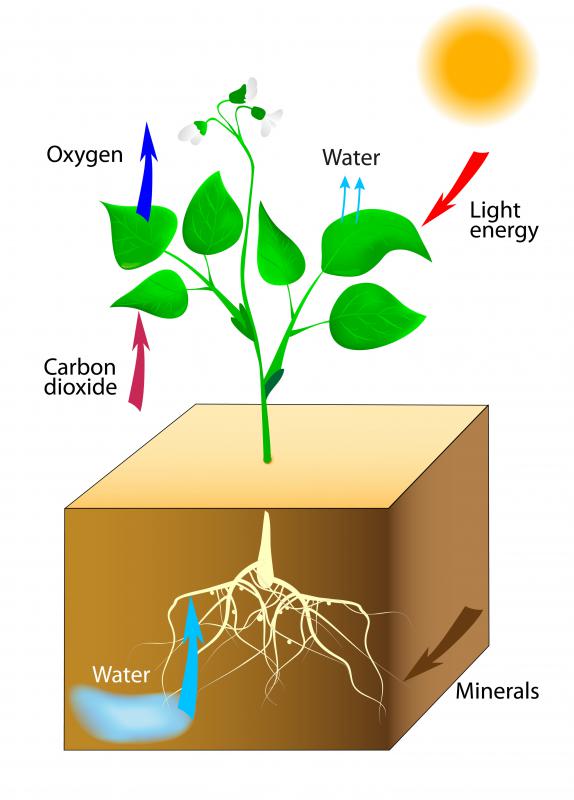At HomeQuestionsAnswered, we're committed to delivering accurate, trustworthy information. Our expert-authored content is rigorously fact-checked and sourced from credible authorities. Discover how we uphold the highest standards in providing you with reliable knowledge.
What are Xerophytes?
One of the plant world’s greatest wonders includes the unique adaptability of the xerophytes. These interesting plants have the ability to alter both their physical structure and behavior in order to survive in and grow under extreme conditions, such as drought. Xerophytic plants possess an extraordinary way of storing and conserving water.
The most common trait found in many xerophytes is fewer leaves and thick, waxy stems or skin. These succulent leaves and stems hold and store moisture. Fewer leaves also reduce the amount of transpiration, or water loss. Many of these plants have also adapted by replacing traditional leaves with spines or thorns. Examples of this adaptation include cacti and succulent plants, which are typically found in dry desert regions where water is scarce.

These xerophytic plants are able to store water whenever it becomes available, accumulating large amounts of moisture during rainy seasons. This also helps them withstand the higher temperatures that often accompany desert climates. Typically, xerophyte plants close up their pores, called stomata, during the day, allowing them to avoid major water loss. They will instead open them at night; and though some water loss may occur through nighttime transpiration, it is very little.

Cacti and succulents slowly shrink up as moisture is lost, surviving on their stored up water within the leaves or stems. In addition, these xerophytes have extensive, yet shallow, root systems that store water as well. Aerial roots are another xerophytic trait. Many of these plants are found growing in tropical regions, as opposed to dry ones. Examples include bromeliads, orchids, Spanish moss, and staghorn fern. These xerophytes are oftentimes found growing within the limbs of forest trees. Their suspended roots serve not only as anchors but also absorb moisture from the humid air.
Some xerophytes live in arctic regions as well. These plants often rely on many silvery-colored hairs and succulent leaves for survival. The leaves store moisture while the light-colored hairs reflect sunlight and serve as wind barriers. This adaptation allows them to survive under cold, dry and relatively harsh conditions. Other types of xerophytic plants survive by becoming dormant during dry periods and then regrow once moisture returns. Bulbs are a good example of this adaptability.
Bulbous plants are able to store water and nourishment for long periods, especially during drought-like conditions. Other plants such as lichen, some desert bushes, and even algae, can withstand being dried out for extended periods. The resurrection plant, for instance, may actually appear dead but will quickly revive itself once water has been restored. Still others, such as ephernerals, may live and reproduce only during the wet season before dying. They live just long enough to leave their drought-resistant seeds, which sprout once it rains.
AS FEATURED ON:
AS FEATURED ON:












Discussion Comments
This is great. It's got all the information I need!
I highly recommend it.
Post your comments